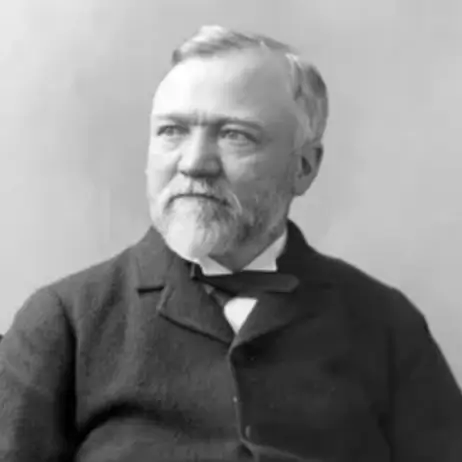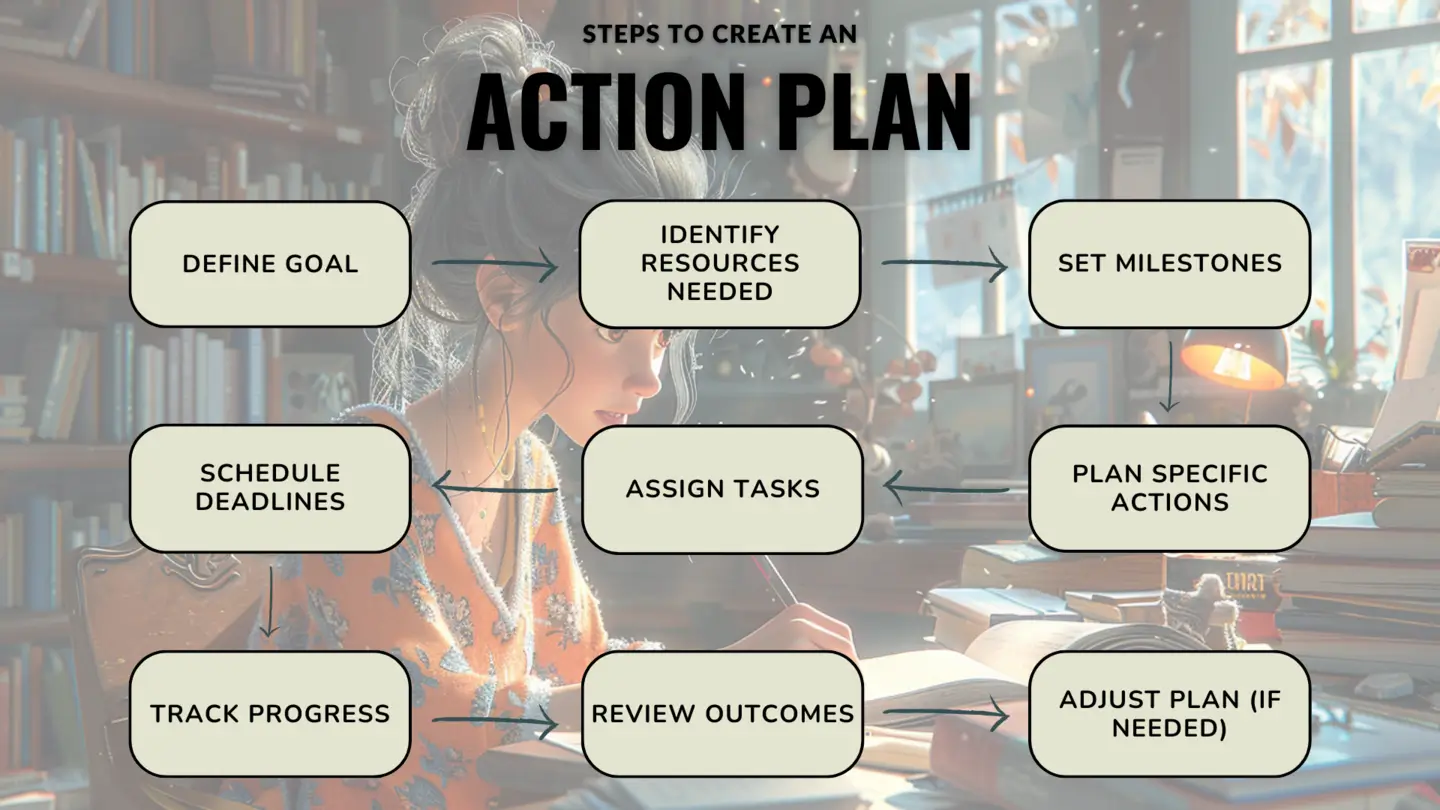Feeling lost and unmotivated? It’s like you’re adrift on a boat with no destination! Year after year passes, and you find yourself no closer to the life you dream about.
I know what is the frustration of not knowing what you truly want. You watch others succeed, while you spin your wheels, feeling a mix of envy and disappointment.
The key lies in identifying your personal goals. With clear goals in mind, you’ll gain focus, unlock your potential, and confidently chart a course for the future you deserve.
Understanding the Personal Goals
If you want to create a life you love, understanding personal goals is the first step. Think of them as milestones marking your journey.
They can be big or small, focused on your career, health, relationships – anything that matters to you!
Setting personal goals provides a powerful sense of direction, boosts your motivation, and helps you celebrate achievements along the way.

What are Personal Goals?
Personal goals are the things you want to achieve, accomplish, or experience in your life. They reflect your dreams, values, and what truly matters to you.
- Specific: They’re not vague wishes, but have clearly defined outcomes.
- Relevant: They are meaningful to you and your life.
- Aligned with Your Values: They resonate with your beliefs and priorities.
| Vague Aspiration | Clear Personal Goal |
|---|---|
| Be happier | Learn to manage stress through meditation and mindfulness practices |
| Get in shape | Complete a 5K marathon in under 30 minutes by training 4 days a week |
| Improve my finances | Build a $5,000 emergency fund within 6 months by saving an extra $833 per month |
Benefits Of Goal Setting
Setting personal goals isn’t just about crossing things off a list. It unlocks a whole range of benefits that can transform your life. Here’s why goal setting is so powerful:
- Provides Focus and Clarity: Goals act like a compass, helping you filter out distractions and prioritize what truly matters.
- Boosts Motivation: Having a clear target fuels your drive and determination to overcome challenges.
- Increased Confidence and Self-Belief: The feeling of accomplishment after reaching goals, no matter how small, builds your confidence and shows you what you’re truly capable of.
- Creates a Sense of Purpose: Goals give meaning to your daily actions and connect them to your bigger picture.
- Promotes Growth and Progress: Reaching for your goals pushes you to learn, develop new skills, and stretch beyond your comfort zone.
"The only thing that stands between you and your dream is the will to try and the belief that it is actually possible."
 Joel Brown
Joel Brown Think of it this way: Setting goals is like mapping out the perfect hike. You’ll enjoy the journey more, knowing where you’re headed and how thrilling the view from the top will be!
Types of Goals
Personal goals can cover a wide range of life areas. Here are a few categories to get your wheels turning:
- Career Goals: These target your professional aspirations, such as promotions, salary increases, starting your own business, or changing career paths.
- Financial Goals: This includes achieving greater financial stability, reaching savings targets, paying off debt, or making wise investments.
- Health and Wellness Goals: These focus on your physical and mental well-being, aiming for healthy habits, fitness levels, stress management, or improved sleep.
- Relationship Goals: These involve cultivating meaningful connections, improving communication skills, deepening existing bonds, or finding new friendships or romantic partners.
- Personal Development Goals: These center on self-improvement, aiming to learn new skills, develop talents, broaden your knowledge, or overcome personal limitations.
- Creative and Hobby Goals: These are all about expressing yourself or nurturing passions in areas like art, music, writing, DIY projects, or travel.
This isn’t an exhaustive list! Your goals should be as unique as you are.

12 Tips to Identify Personal Goals
Now that you have a solid understanding of personal goals, it’s time to uncover what lights your inner fire!
These practical tips will help you pinpoint the goals that are truly meaningful to you, setting the foundation for a future you’re truly excited about.
1. Dive Deep into Your Passions and Interests
When your goals align with what naturally excites you, several things happen.
You’ll experience increased motivation, feeling energized to work towards your goals instead of dreading the effort. Passion fuels resilience, helping you overcome challenges.
It leads to greater creativity, inspiring innovative problem-solving. Most importantly, goals stemming from your passions carry a deep sense of fulfillment and authenticity.
Start by asking yourself these questions:
- What activities make me feel fully alive and engaged?
- When do I lose track of time and feel completely absorbed?
- What could I talk about for hours without getting bored?
- What are my childhood dreams that I may have forgotten about?
SMALL STORY
Sarah has always felt a deep connection to animals. Growing up, she volunteered at animal shelters and dreamed of being a veterinarian. As she got older, life got busy and she pushed those dreams aside.
Reconnecting with her passion for animals might inspire a goal to volunteer at a local rescue, foster animals in need, or even transition her career into the animal care field.
"A goal properly set is halfway reached."
 Zig Ziglar
Zig Ziglar 2. Assess Your Strengths and Skills
Identifying your strengths and skills gives you a powerful edge in setting achievable and satisfying goals.
It helps you play to your best qualities, enhancing your chances of success while building confidence along the way.
Think about these areas:
- Natural Talents: What comes easily to you that others may struggle with?
- Acquired Skills: What have you learned through training, education, or experience?
- Positive Feedback: What skills and qualities do others regularly compliment you on?
- Personal Projects: What tasks or hobbies do you excel at and enjoy?

SMALL STORY
Alex loved tinkering with computers and was always the “tech support” for family and friends. He never considered his strong technology skills as a potential career path.
Reflecting on his strengths led him to explore technical training programs, setting a goal to become an IT specialist.
3. Consider Your Values and Beliefs
Your core values and beliefs shape who you are and what truly matters to you. Goals that align with these values will feel meaningful and bring a sense of integrity to your life.
Consider these questions:
- Core Values: What principles are most important to you? (honesty, kindness, ambition, etc.)
- What Causes Excite You? Do issues like social justice, environmental protection, or helping others light a fire in you?
- Who Do You Admire? What qualities in others do you respect and aspire to emulate?
- Perfect Day: If you could design your ideal day, what would it include?
SMALL STORY
Maria always valued family and community. While her job paid well, it involved long hours and felt disconnected from her values.
This realization inspired her goal of starting a small business that would allow her to give back to her community and prioritize time with loved ones.
"If you want to be happy, set a goal that commands your thoughts, liberates your energy, and inspires your hopes."
 Andrew Carnegie
Andrew Carnegie 4. Set SMART Goals
The SMART goal-setting framework is a classic because it works! It ensures your goals are clear, specific, and achievable, setting you up for success.
By incorporating these elements into your goals, you’ll be able to track your progress, stay motivated, and celebrate reaching those milestones.
SMART stands for:
- Specific: Define your goal with as much detail as possible.
- Measurable: Include a way to track your progress and know when you’ve reached the goal.
- Achievable: Be realistic about what you can achieve given your resources and timeframe.
- Relevant: Make sure the goal aligns with your bigger picture and priorities.
- Time-Bound: Set a deadline to create urgency and a clear target.
SMALL STORY
Instead of a vague goal like “get organized”, John used the SMART method to set a goal of “Declutter my office by March 31st, removing 3 boxes of non-essential items for donation”.
This goal is specific, measurable, achievable, relevant to his desire for a tidy workspace, and time-bound.
Free SMART Goal Generator!
5. Visualize Your Future
Visualization is a powerful tool to clarify your desires and fuel your motivation. When you create a vivid picture of what achieving your goals looks and feels like, it becomes more real and attainable.
Here are a few visualization methods:
- Vision Board: Create a collage of images, words, and affirmations representing your ideal future.
- Write a Detailed Scenario: Write a narrative describing a day in your life after achieving your goals. Include sensory details, like sights, sounds, and emotions.
- Guided Meditation: Find guided meditations focused on goal visualization, or use your imagination to create your own.
SMALL STORY
Before starting her training program, Emily visualized herself confidently crossing the finish line of her first marathon. She imagined the cheering crowds, the feeling of accomplishment, and the medal around her neck.
This visualization helped her stay motivated during grueling training runs.
6. Write Down Your Goals
Putting your goals in writing makes them concrete and helps you stay accountable. There’s something powerful about seeing your goals on paper (or in a digital document!).
These techniques help:
- Dedicated Goal Journal: Keep a notebook specifically for your goals and aspirations.
- Notes App: Jot down your goals in a note-taking app on your phone for quick access.
- Vision Board: Add written goals to your vision board for extra reinforcement.
- Post-it Notes: Place reminders of your goals in visible spots around your home or workplace.
Research has confirmed that people who write down their goals are more likely to be successful than those who have either unwritten goals or no specific goals at all. (Source: Dominican University of California)
SMALL STORY
Mariana started each week by writing down her top three goals in her goal journal. This ritual helped her prioritize her actions and ensure her daily tasks were moving her closer to what she wanted.
"The journey of a thousand miles begins with a single step."
 Lao Tzu
Lao Tzu 7. Analyze Your Current Situation
Before diving headfirst into creating a grand plan, it’s wise to honestly assess your starting point. This will help you identify potential obstacles and set realistic benchmarks.
Think about these questions:
- Relevant Skills & Knowledge: What current resources do you have that support your goals? Where might there be gaps?
- Time & Resources: How much time and energy can you realistically dedicate to your goals? What financial or other resources do you need?
- Potential Roadblocks: Are there any personal habits or external factors that could hinder your progress?
SMALL STORY
Jessica wanted to run her first half-marathon but realized she was starting from zero fitness. Instead of getting discouraged, she analyzed her situation.
She mapped out a beginner training plan, budgeted for proper running shoes, and researched healthy meal plans to support her new activity level.

8. Identify Obstacles and Challenges
Anticipating potential roadblocks allows you to proactively develop strategies to overcome them. This makes your goals feel less daunting and prevents you from being derailed by unexpected setbacks.
Ask yourself:
- Internal Obstacles: Are there any fears, limiting beliefs, or procrastination habits holding you back?
- External Obstacles: Are there potential limitations in your time, finances, or support network?
- Plan B: You don’t need a plan B if you focus 100% to your main objective because you will make it or make it.
SMALL STORY
Omar had a goal to start his own freelance writing business. He knew time management would be a challenge juggling his full-time job.
His solution was to designate specific hours for working on his business and to create a contingency plan for when unexpected work deadlines popped up.
9. Seek Feedback and Advice
Don’t go it alone! Connecting with people who have achieved similar goals, or who can offer support and guidance, will boost your chances of success.
Consider these resources:
- Mentors and Role Models: Is there someone in your field or area of interest that you admire? Reach out and ask if they’d be open to sharing their experience.
- Online Communities: Find online forums or groups related to your goals where you can exchange advice and support.
- Friends and Family: Let your loved ones know about your goals. They may have insights or be able to offer practical support.
SMALL STORY
Before enrolling in a graphic design course, Maya joined several online communities for aspiring designers.
She found valuable feedback on her portfolio, learned about industry trends, and made connections that eventually led to freelance opportunities.
"You are never too old to set another goal or to dream a new dream."
 C.S. Lewis
C.S. Lewis 10. Prioritize Your Goals
It’s tempting to try and tackle everything at once, but this often leads to feeling overwhelmed. Prioritizing your goals allows you to focus your energy and make steady progress.
Try these methods:
- Importance vs. Urgency: Identify goals that are both important to your long-term vision and have a degree of urgency.
- Ranking: List your goals in order of significance.
- The “Big Rocks” Concept: Imagine your time and energy as a jar. The “big rocks” are your top-priority goals. Focus on fitting those in first.
SMALL STORY
Lorenzo had goals in all areas of life: career advancement, improving his fitness, and learning Spanish. He realized trying to progress on all fronts simultaneously was exhausting.
He re-evaluated, focusing primarily on his career goal for six months, while making minimal, but consistent, progress on his other goals.
11. Create Action Plans
Break down large goals into smaller, manageable steps. This will make them feel less intimidating and provide a clear path forward.
Try these techniques:
- Reverse Engineer: Start with your end goal and work backward, identifying milestones along the way.
- Time Blocking: Dedicate specific blocks of time in your schedule to work on your goals.
- To-Do Lists: Break down each step into actionable tasks and add them to your daily or weekly to-do list.

SMALL STORY
Brittany’s goal of becoming a yoga instructor felt overwhelming.
By creating an action plan, she broke it down into smaller steps: researching certification programs, saving for course fees, establishing a consistent home practice, and finding volunteer teaching opportunities.
12. Review and Adjust Regularly
Goals aren’t set in stone! Regular reflection and adjustments are crucial for staying on track and adapting to changing circumstances.
- Schedule Check-Ins: Set calendar reminders for weekly, monthly, or quarterly goal reviews.
- Ask Questions: Are you making progress? Do your goals still excite you? Have your priorities shifted?
- Be Flexible: Don’t be afraid to adjust goals or timelines. Life happens, and agility is key to success.
SMALL STORY
Initially, Michael’s goal was to become a published author within a year. After six months, he realized the scope of his project was too ambitious.
He adjusted his goal, focusing on completing a first draft and seeking feedback from beta readers. This prevented discouragement and kept him moving forward.
Important MessageWhile it’s essential to review and adjust your goals regularly, it’s equally important to maintain a long-term commitment to your core objectives. Changing your goals too frequently will lead to a lack of focus and progress.
5 Most Common Obstacles to Avoid Finding Your Goals
Setting goals is the exciting part! But even with the best intentions, it’s normal to encounter roadblocks.
In this section, we’ll uncover common pitfalls and equip you with the tools to overcome them, ensuring nothing stands between you and your dreams.
1. Self-Doubt and Insecurity
Even with a spark of desire, a hidden enemy can extinguish its flame. Self-doubt whispers insidious lies: “You’re not good enough”, “It’s too late”, or “What if you fail?”
This internal critic erodes your confidence, making goals feel unattainable and discouraging you from even trying.
- The Dream Killer: Self-doubt keeps you playing small. Instead of reaching for goals aligned with your true potential, you settle for the “safe” options, limiting your growth and fulfillment.
- Distorted Reality: Negative self-talk magnifies challenges and downplays your abilities. This skewed perception makes goals appear far more daunting than they truly are.
STRATEGIES TO OVERCOME IT
- Challenge Negative Thinking: Question your inner critic. Is there evidence to support those limiting beliefs, or are they based on past experiences or fear? Replace these thoughts with positive affirmations focusing on your strengths and potential.
- Celebrate Your Wins: Focus on your accomplishments, big and small. Building a record of success reminds you of your worth and resilience.
- Find Your Tribe: Surround yourself with supportive people who believe in you and lift you up. Seek mentors or communities who have overcome similar self-doubt.

2. External Pressure and Expectations
Imagine charting your course on a map, only to have everyone around you shouting conflicting directions. It’s easy to lose sight of your own destination when bombarded with external pressures.
The expectations and opinions of others can be a major obstacle in goal setting, leading you down a path that doesn’t align with your true passions and desires.
STRATEGIES TO OVERCOME IT
- Focus on Your “Why”: Reconnecting with your core motivations for setting a goal strengthens your resolve. Why is this important to you?
- Set Boundaries: Communicate your goals with loved ones, but establish clear boundaries. Explain your vision and politely assert your right to pursue your own aspirations.
- Find Your Support System: Seek out a network of supportive people who believe in your dreams, not someone else’s vision for you. Surround yourself with positive influences who encourage you to chase your own goals.
3. Overanalyzing and Indecision
Sometimes the greatest obstacle to setting goals isn’t a lack of options, but an overload of possibilities. The fear of making the “wrong” choice can lead to endless rumination and analysis paralysis.
This overthinking prevents you from taking action, leaving you frustrated and stuck in place.
STRATEGIES TO OVERCOME IT
- Embrace “Good Enough”: Set realistic decision-making deadlines. Seek information to make an informed choice, but recognize perfection is unattainable. Sometimes, the best decision is simply to make a decision.
- Trust Your Intuition: Connect with your gut instincts. After gathering information, reflect on which goal path feels most aligned with your desires and values, even if there’s some uncertainty.
- Start Small, Experiment: Break down your big goal into smaller actions you can test. Taking even a small step can illuminate the path forward more definitively than endless overthinking.
"Believe you can and you’re halfway there."
 Theodore Roosevelt
Theodore Roosevelt 4. Lack of Self-Awareness
Imagine setting sail on a vast ocean without a compass or map. Without understanding your own internal landscape, setting goals can feel like navigating in the dark.
Lack of self-awareness hinders your ability to identify what truly resonates with you and can lead you to pursue goals that don’t align with your values, strengths, or ultimate desires.
STRATEGIES TO OVERCOME IT
- Dive Deep with Self-Reflection: Invest time in introspection. Journal about your values, passions, and what brings you a sense of purpose. Consider past experiences that sparked joy or frustration.
- Seek Trusted Feedback: Ask close friends, mentors, or colleagues for honest feedback on your strengths and weaknesses. Their insights can illuminate blind spots and offer valuable perspectives.
- Embrace Self-Discovery Tools: Personality assessments or skill inventories can provide a structured framework for self-exploration, revealing areas of natural talent and potential areas for growth.
5. Fear of Commitment
Sometimes, the fear isn’t of failure, but of choosing the “wrong” path and closing yourself off from other possibilities.
This fear of commitment, rooted in perfectionism or uncertainty, can paralyze your ability to set goals altogether.
STRATEGIES TO OVERCOME IT
- Small Commitments, Big Impact: Start by committing to the process of goal setting, not a single, inflexible outcome. This builds confidence and reduces the perceived pressure of a grand declaration.
- Embrace the Unknown: Recognize that some uncertainty is inevitable. Choose to commit to the direction you know now, knowing that course adjustments are always possible.
- Focus on Learning: Frame goal pursuit as a journey of growth and self-discovery. This emphasizes the benefits of the process, even if the exact destination evolves.
Success Story: From Uncertainty to Tech Titan
Imagine a young boy in South Africa, passionate about technology but uncertain about his future. That boy was Elon Musk, who transformed from a dreamer into one of the most successful technology entrepreneurs of our time.
Identifying Personal Goals: Musk’s journey began with a deep dive into his passions and interests, particularly in technology and renewable energy. He envisioned a future where sustainable energy and space exploration were the norms, not the exceptions. This vision became the bedrock of his personal and professional goals.
Overcoming Obstacles: Musk faced numerous obstacles, including skepticism from experts and financial instability. His ability to stay true to his values and beliefs, tip number three from our list, played a pivotal role in navigating through these challenges. Despite the high risk of failure, he committed to his goals, founding companies like SpaceX and Tesla, driven by a clear vision for change.
Achieving Success: Through setting SMART goals (tip number four), Musk could outline actionable steps towards monumental achievements, such as launching the first privately funded spacecraft to reach the International Space Station. His success story is a testament to the power of identifying and steadfastly pursuing personal goals.

Elon Musk’s journey from uncertainty to becoming a tech titan illustrates the transformative impact of clear goal-setting. His accomplishments underscore the article’s message:
With clear personal goals, anyone can chart a course to a future filled with achievement and fulfillment.
Final Thoughts
Setting goals is more than a to-do list; it’s about unlocking the extraordinary life you were meant to live.
If you understand potential roadblocks and dedicate yourself to the process of self-discovery, you’ll lay the groundwork for goals that truly light your path.
Next Steps
- Put Pen to Paper (or Fingers to Keyboard!) Don’t let your newfound insights fade away. Immediately carve out 30 minutes to start writing down potential goals. Use the brainstorming strategies you’ve learned and let your ideas flow freely.
- Choose a Focus: From your list of potential goals, select one you’re especially drawn to. Write it at the top of a fresh page.
- One Tiny Step: What’s the smallest action you can take TODAY that moves you closer to this goal? It could be research, having a conversation, or simply a short visualization practice. Do it!
- Find Your Accountability: Share your goal with a supportive friend or seek out an online goal-setting community. Knowing others are cheering you on boosts your motivation.
The adventure has just begun! Get ready to transform your goals from wishes into reality.
Frequently Asked Questions
How do I decide what to do with my life?
This question doesn’t have a simple answer, but it starts with self-reflection. Identify your core values, passions, and what brings you a sense of purpose.
Be honest about your skills, resources, and any constraints in your life. Explore potential careers, lifestyles, and fields of interest.
Why is goal identification important?
Identifying clear goals provides focus and direction. It helps you track progress, stay motivated, and make better use of time and resources.
Without clear goals, you risk wandering aimlessly, wasting effort on things that don’t truly matter to you.
How do you identify strategic goals?
Strategic goals center on your big-picture vision. Ask yourself: Where do I want to be in 1 year, 5 years, or even a decade? What key milestones will indicate I’m on track?
Your strategic goals should align with this desired future state.
How do you strategize your goals?
Start by breaking your big goals into smaller, manageable steps. Identify which tasks to prioritize, the resources you’ll need (money, time, skills), and potential roadblocks.
Create a timeline, and set regular checkpoints to assess your progress and adjust your plan as needed.




